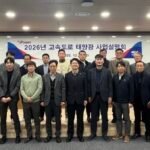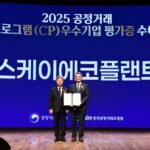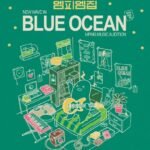Lotte Biologics CEO Richard Lee unveils the company’s long-term business strategy
South Korean biopharmaceutical company Lotte Biologics Co. said on Wednesday it aims to achieve 1.5 trillion won ($1.1 billion) in annual sales by 2030 with the addition of three new domestic drug manufacturing plants.
With a combined production capacity of 400,000 liters of biopharmaceuticals, Lotte said it aims to join the global top 10 contract drugmakers, known as contract development and manufacturing organization (CDMO) firms.
The long-term plans came as it broke ground on its first domestic drug manufacturing plant in the bio cluster of Songdo’s international business district in Incheon, west of Seoul.
Lotte Engineering & Construction Co. is in charge of the engineering, procurement and construction (EPC) of the factory.
Bird’s-eye view of Lotte Biologics plants in Songdo, Incheon, South Korea (Courtesy of Lotte)
Construction of plant 1 with a production capacity of 120,000 liters is scheduled for completion in the first quarter of 2026 with a plan to start commercial operation by January 2027.
The company said it will build two more biopharmaceutical production facilities of the same size at the Songdo Bio Campus.
When the three plants are completed, Lotte will have a global production capacity of 400,000 liters, including the 40,000-liter Syracuse plant it acquired from US-based multinational pharmaceutical company Bristol Myers Squibb (BMS) in 2022.
Lotte acquired the New York-based factory at $160 million in 2022 and said it would invest an additional $48 million in the facility.
Lotte Biologics aims to join the global top 10 CDMO firms by 2030 (Screenshot captured from its website)
SYNERGY BETWEEN SYRACUSE PLANT, SONGDO BIO CLUSTER
Lotte said the first domestic plant in Songdo will have a “Titer Flex Quad Bioreactor System,” a high-titer facility that combines bioreactors to enhance the efficiency and flexibility of the production process.
The plant will also have the “N Minus One Perfusion (N-1 Perfusion)” system, which enables high-concentration cell culture by culturing cells and removing wastes at the same time.
Company executives said the Syracuse plant is suitable for the smaller-scale production of clinical products and antibody-drug conjugates (ADCs), while the Songdo Bio Campus will handle large-scale antibody products via the high-titer and perfusion processes, offering a broader portfolio of options to clients.
Lotte Biologics’ pharmaceuticals production plant in Syracuse, New York
“One of Syracuse’s key strengths is its extensive experience with GMP (good manufacturing practice) approvals from many counties and its highly skilled GMP workforce,” said Yoo Hyung-duk, chief of business ramp-up at Lotte Biologics. “Through rotations between the Syracuse and Songdo plants, we aim to strengthen GMP capabilities and increase productivity at the new Songdo plant.”
In addition to the new Songdo factories, Lotte also plans to build a laboratory and start a “Bio Venture Initiative” to support biotech ventures and seek technological cooperation.
When asked if Korean CDMO companies would benefit from the biosecurity law under discussion in the US Congress, Lotte Biologics Chief Executive Lee Won-jik, who is known in the West as Richard Lee, said: “Geopolitical issues continue to change. We’re watching moves in the US and China about the law. We want to be flexible about it.”
By Jeong-Min Nam
peux@hankyung.com
In-Soo Nam edited this article.















